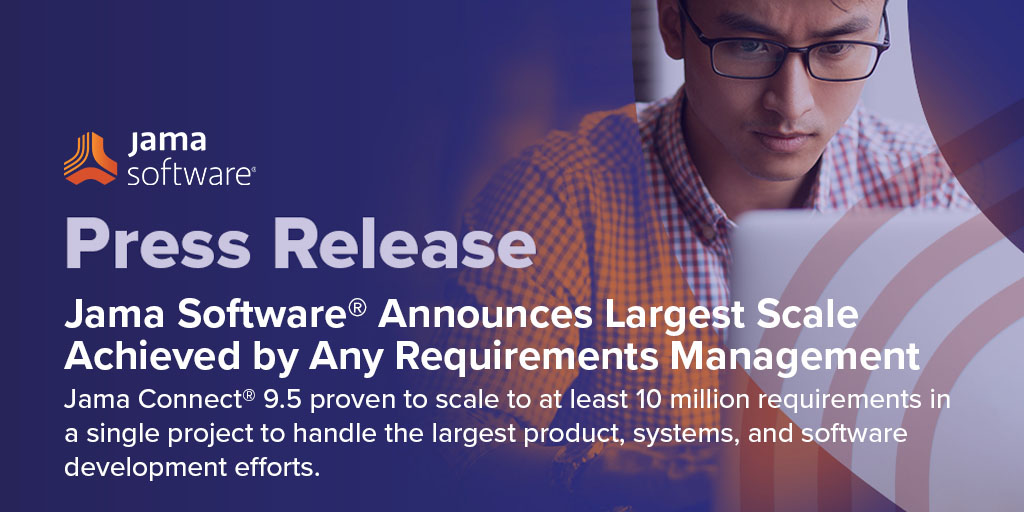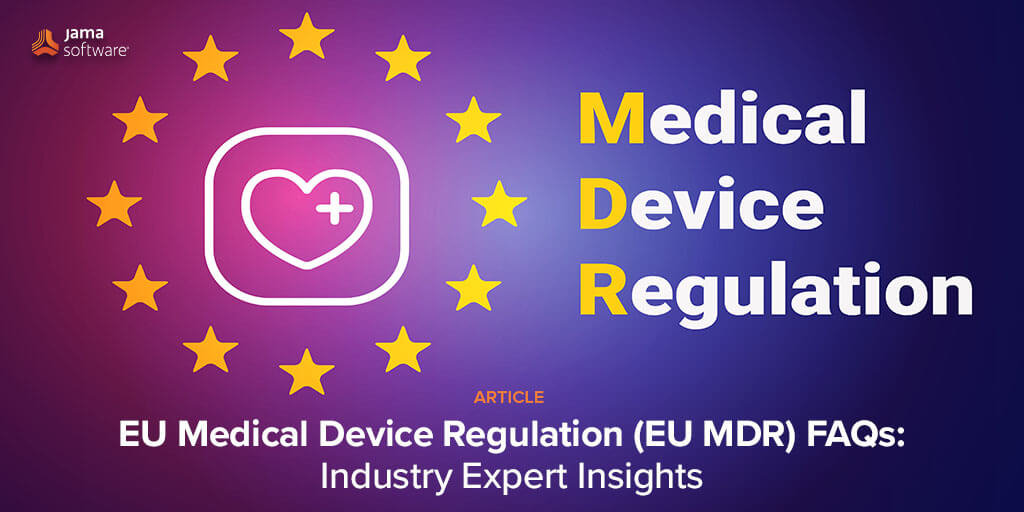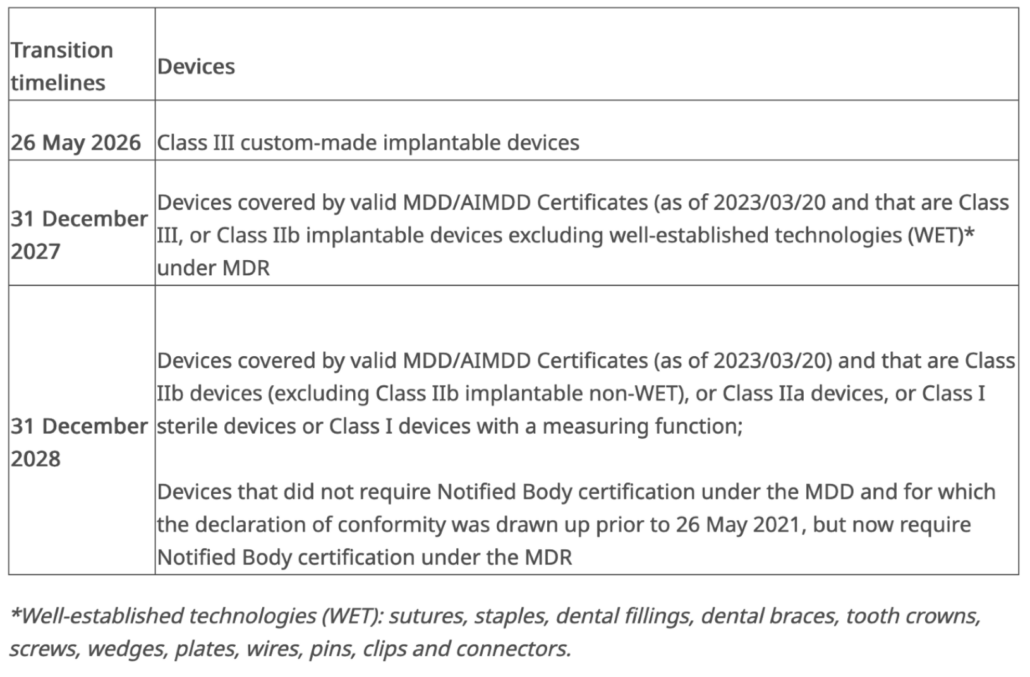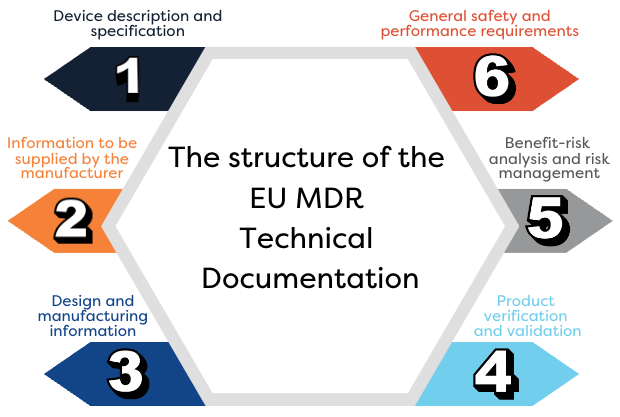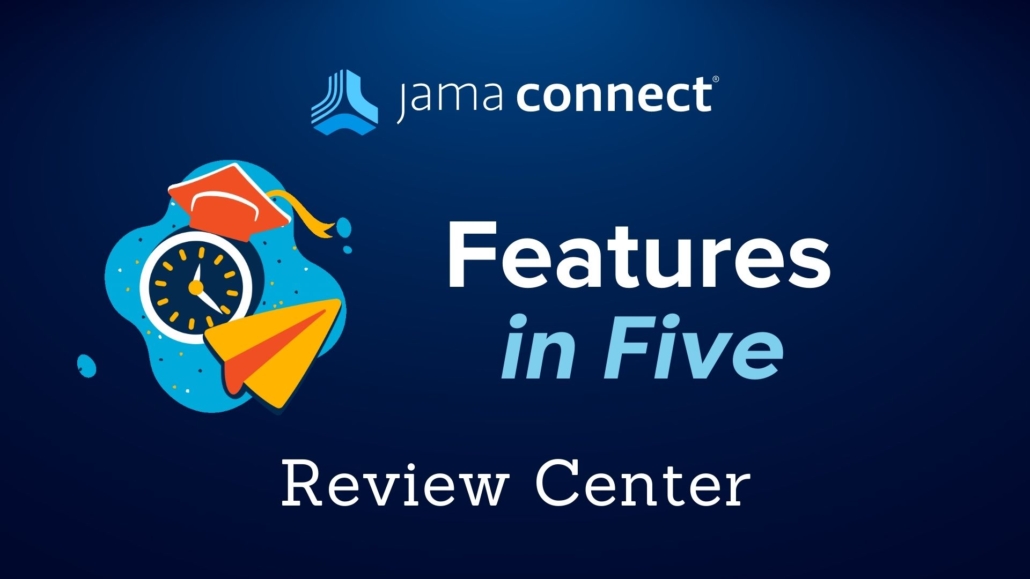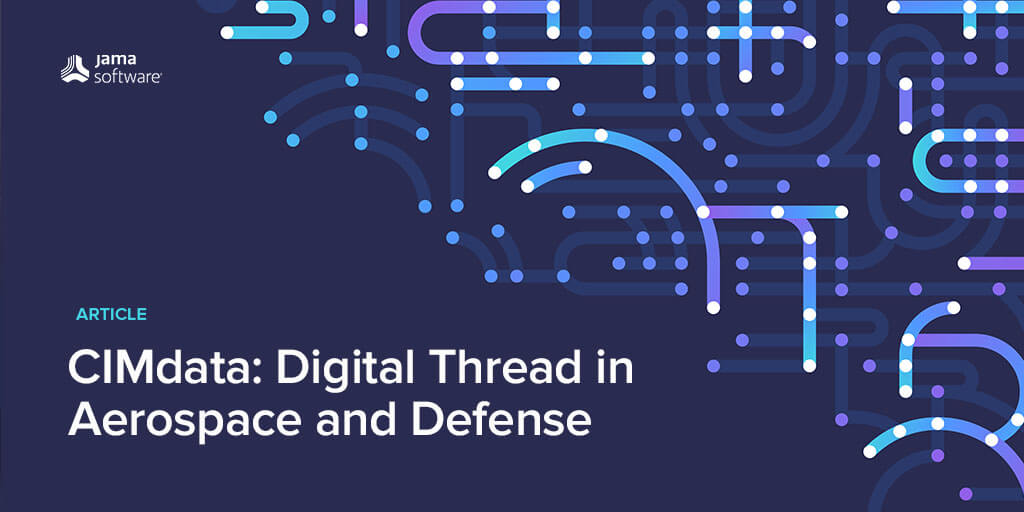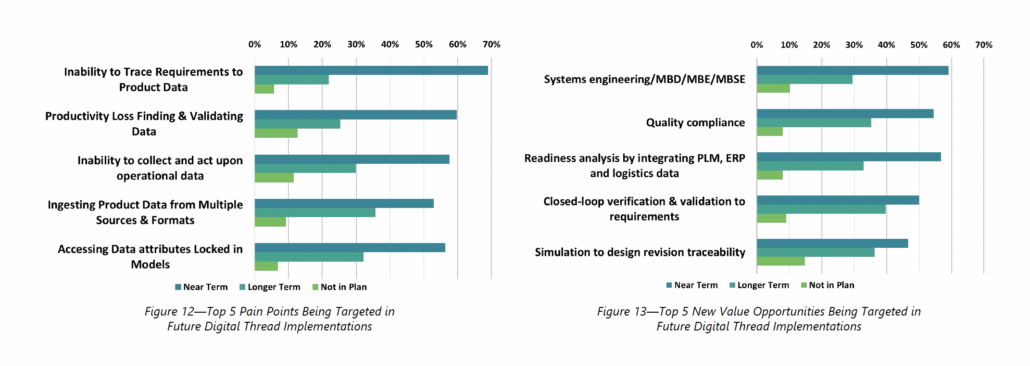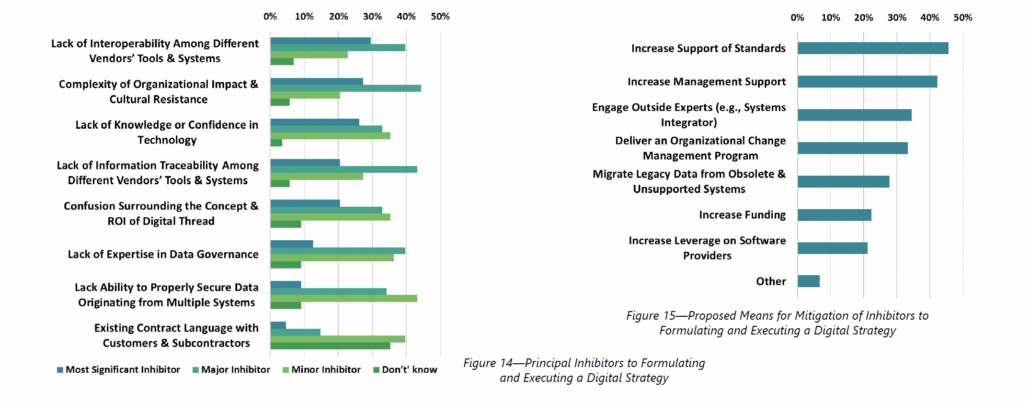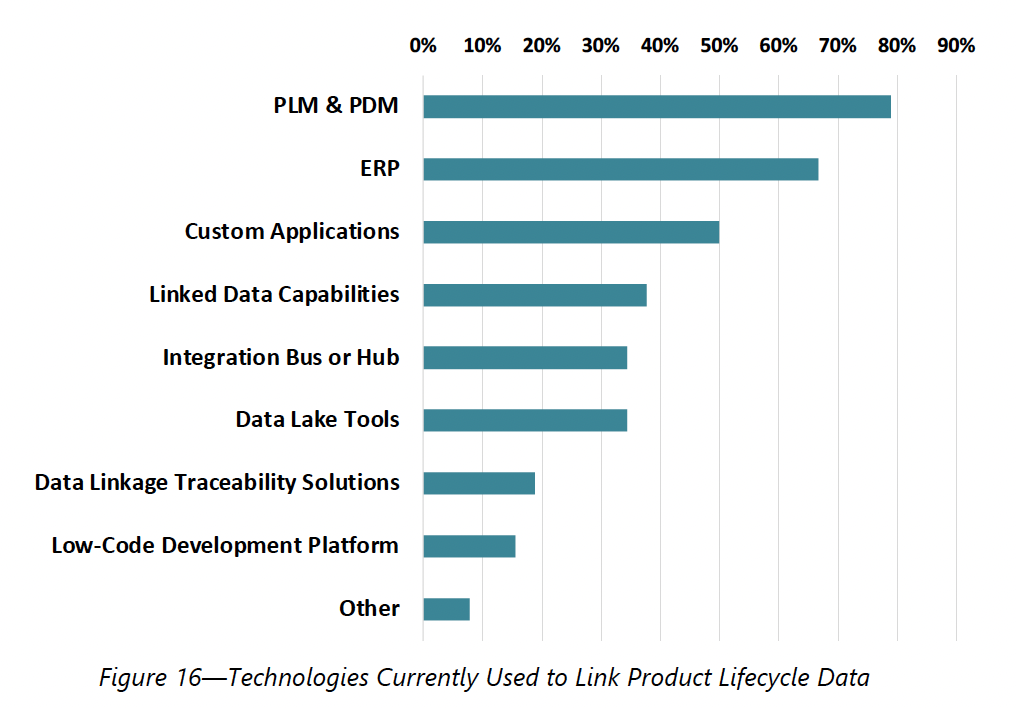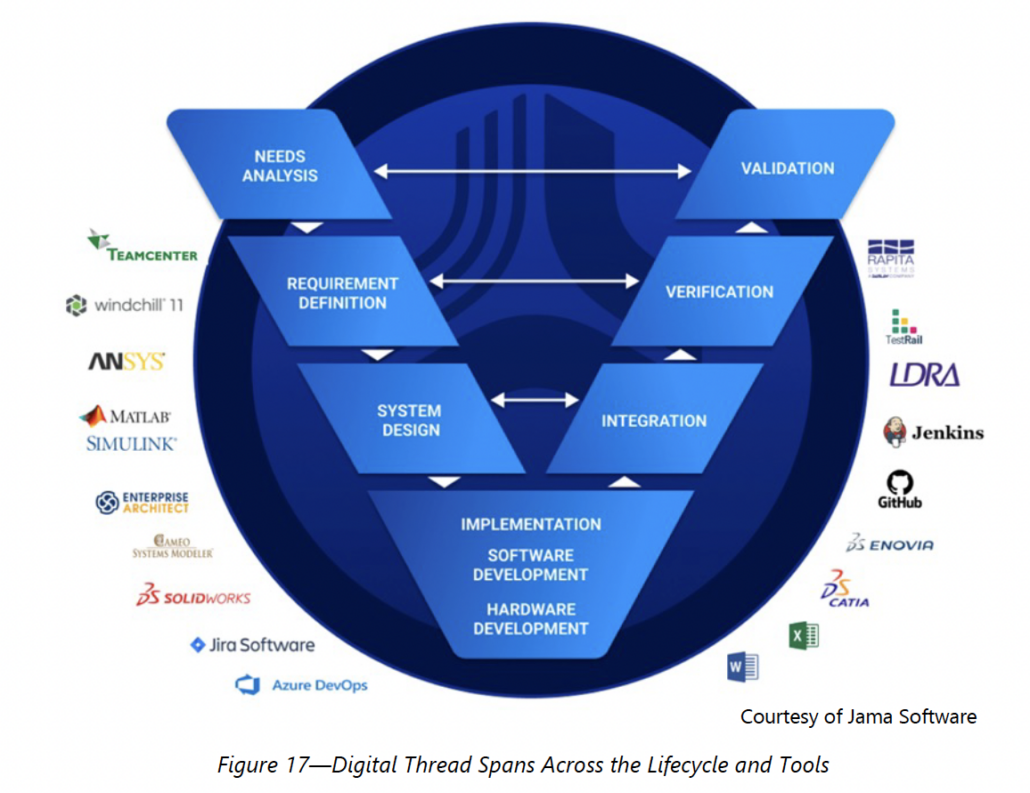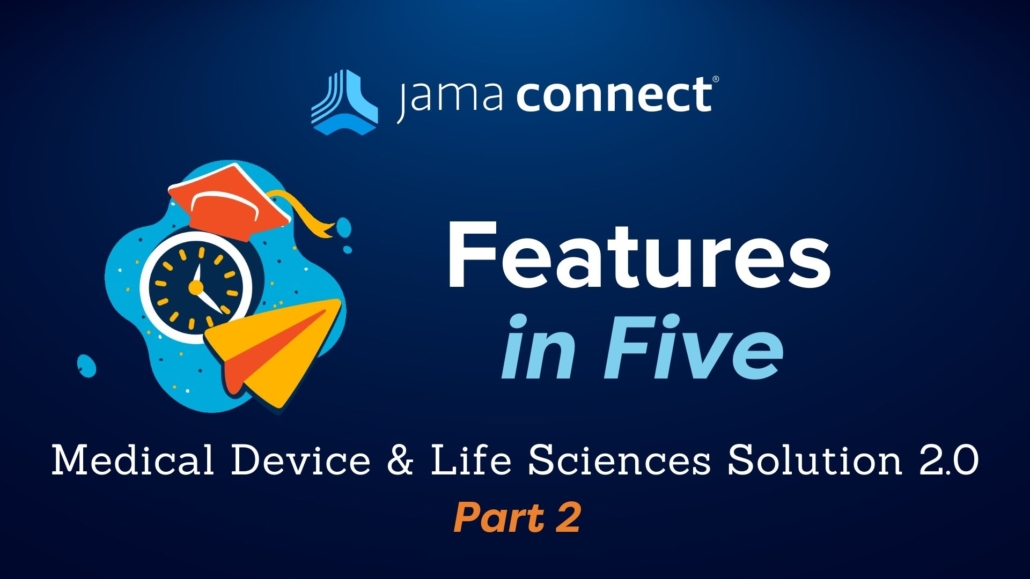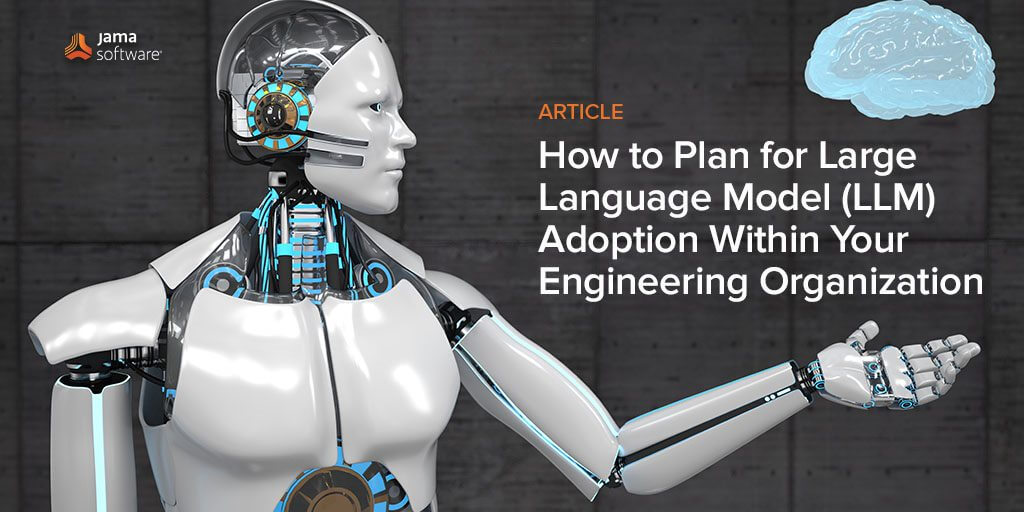
In this video, we’ll discuss the Software as a Medical Device (also known as SaMD) framework in Jama Connect.
Jama Connect® Features in Five: SaMD Framework
Learn how you can supercharge your systems development process! In this blog series, we’re pulling back the curtains to give you a look at a few of the powerful features in Jama Connect®… in about five minutes.
In this Features in Five video, Romer De Los Santos – Senior Consultant at Jama Software® – will go over some highlights of the Software as a Medical Device (also known as SaMD) framework in Jama Connect.
VIDEO TRANSCRIPT
Romer De Los Santos: Hello. My name is Romer De Los Santos and I’m a senior consultant here at Jama Software. In this video, we’ll go over some highlights around Jama Connect’s new Software as a Medical Device (also known as SaMD) framework.
Anyone who has worked developing medical device software has struggled with balancing the creation and maintenance of the required documentation with the day-to-day struggle of developing and testing software. And because software cycles are highly iterative, they are incompatible with traditional waterfall development.
Jama Connect’s new SaMD framework is designed to help alleviate the burden of documentation so that your team can focus on development. This purpose-built framework allows users working on both simple and complex software projects to use Jama Connect right out of the box. Its design was born from over 20 years of hands-on experience developing medical device software.
Some highlights of this framework include:
- Templates like Software Development Plans that are designed to be compliant with IEC62304. These documents come with a customizable report that you can modify with your own branding.
- Built-in risk analysis designed to be compliant with ISO14971 that takes advantage of Jama Connect’s built-in look-up table feature.
- A new SOUP/OTS item type is designed to capture information about third-party developed software components in compliance with the FDA’s guidance on Off the Shelf, (or OTS)Software Use In Medical Devices.
- A new External Resource item type to capture and trace items tracked outside of Jama Connect.
Let’s take a closer look.
RELATED: Traceable Agile – Speed AND Quality Are Possible for Software Factories in Safety-critical Industries
De Los Santos: The SaMD framework gives new medical device manufacturers a great starting point. It has been designed to with regulations like IEC 62304 and ISO 14971 in mind. However, manufacturers are still required to define their own quality management system.
Although regulations specify what needs to be documented, there’s no universally accepted document name or format. Jama Connect can be configured to use your company’s own jargon and the document templates required by your own quality management system.
The framework is organized into four major components in a document-centric structure. This means that items are organized into documents rather than by function.
This structure is easier for new users to recognize and work on. It also facilitates the generation of documents that will be submitted to the system of record of your choice.
For your convenience, the framework includes customizable export templates for multiple documents. You can change the logo, headers, footers, fonts, and style of your document to match your company’s branding requirements.
Project-level documentation includes planning documentation such as the Software Development Plan and Software Verification Validation Plan.
IEC 62304 has specific requirements for software development plans that have been incorporated into the template for your convenience.
RELATED: Jama Connect® Customer Validated Cloud Package for Medical Device and Life Sciences
De Los Santos: While IEC 62304 does not require a separate Software Verification or Validation Plan, it does require specific information about how verification and validation will be performed. This document template includes sections for the required information.
System-Level Documentation includes documents that define the requirements, testing, and design of the whole system. It can include items like User or Stakeholder Needs, Design input documents, Product Requirements Specifications, and Software Architecture documents.
Sub-System Level Documentation can be organized into individual components, software or otherwise. Each component includes the requirements, test cases, and design documentation.
The Risk Management Plan, FMEAs, and risk analysis are centralized in the Risk component. By default, the FMEA and risk analysis are organized as you would see them in Excel. It also takes advantage of Jama Connect’s built-in look-up matrix feature to do your risk calculations.
Of course, not all medical device software projects are multi-component projects. A software project that consists of a single software component doesn’t need to have system and subsystem-level requirements. In this case, remove the System Requirement and System Architecture item types from the relationship diagram to create a single-level structure.
OTS/SOUP components are documented through a new item type that is specifically designed to capture the information specified in the FDA’s guidance on OTS Software Use in Medical Devices.
RELATED: EU Medical Device Regulation (EU MDR) FAQs: Industry Expert Insights
De Los Santos: Jama Connect allows you to trace the specific sections of your design documentation that utilize third-party components to this item type. This makes tracking where these software components are used easy.
Finally, we’ve added a catch-all item called External Resource. External Resource items allow you to trace items that may be tracked outside of Jama Connect. This can be items like instructions for use, labeling, package inserts, specifications, schematics, and pretty much anything else you need to trace.
I hope you got a lot out of this quick look at the new SaMD framework in Jama Connect. If you want to learn more about Jama Connect and how it can optimize your product development process, please visit our website at jamasoftware.com – If you’re already a Jama Connect customer and would like more information about Medical Device Software, please contact your customer success manager or a Jama Software consultant.
To view more Jama Connect Features in Five topics, visit: Jama Connect Features in Five Video Series


